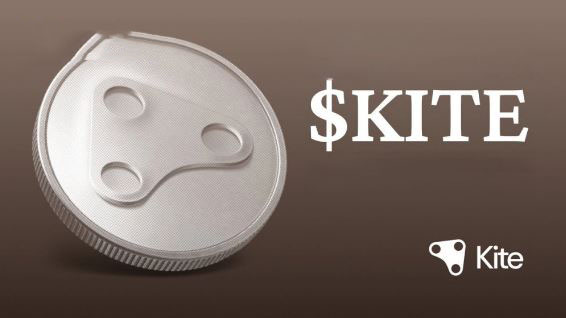pcap过滤器规则
时间:2010-09-28 来源:jlccwss
基于pcap的东东几乎都能通用
****************************************************************
dst host host
True if the IPv4/v6 destination field of the packet is host, which may be either an address or a name.
src host host
True if the IPv4/v6 source field of the packet is host.
host host
True if either the IPv4/v6 source or destination of the packet is host.
Any of the above host expressions can be prepended with the keywords, ip, arp, rarp, or ip6 as in:
ip host host
which is equivalent to:
ether proto \ip and host host
If host is a name with multiple IP addresses, each address will be checked for a match.
ether dst ehost
True if the Ethernet destination address is ehost. Ehost may be either a name from /etc/ethers or a number (see ethers(3N) for numeric format).
ether src ehost
True if the Ethernet source address is ehost.
ether host ehost
True if either the Ethernet source or destination address is ehost.
gateway host
True if the packet used host as a gateway. I.e., the Ethernet source or destination address was host but neither the IP source nor the IP destination was host. Host must be a name and must be found both by the machine's host-name-to-IP-address resolution mechanisms (host name file, DNS, NIS, etc.) and by the machine's host-name-to-Ethernet-address resolution mechanism (/etc/ethers, etc.). (An equivalent expression is
ether host ehost and not host host
which can be used with either names or numbers for host / ehost.) This syntax does not work in IPv6-enabled configuration at this moment.
dst net net
True if the IPv4/v6 destination address of the packet has a network number of net. Net may be either a name from the networks database (/etc/networks, etc.) or a network number. An IPv4 network number can be written as a dotted quad (e.g., 192.168.1.0), dotted triple (e.g., 192.168.1), dotted pair (e.g, 172.16), or single number (e.g., 10); the netmask is 255.255.255.255 for a dotted quad (which means that it's really a host match), 255.255.255.0 for a dotted triple, 255.255.0.0 for a dotted pair, or 255.0.0.0 for a single number. An IPv6 network number must be written out fully; the netmask is ff:ff:ff:ff:ff:ff:ff:ff, so IPv6 "network" matches are really always host matches, and a network match requires a netmask length.
src net net
True if the IPv4/v6 source address of the packet has a network number of net.
net net
True if either the IPv4/v6 source or destination address of the packet has a network number of net.
net net mask netmask
True if the IPv4 address matches net with the specific netmask. May be qualified with src or dst. Note that this syntax is not valid for IPv6 net.
net net/len
True if the IPv4/v6 address matches net with a netmask len bits wide. May be qualified with src or dst.
dst port port
True if the packet is ip/tcp, ip/udp, ip6/tcp or ip6/udp and has a destination port value of port. The port can be a number or a name used in /etc/services (see tcp(4P) and udp(4P)). If a name is used, both the port number and protocol are checked. If a number or ambiguous name is used, only the port number is checked (e.g., dst port 513 will print both tcp/login traffic and udp/who traffic, and port domain will print both tcp/domain and udp/domain traffic).
src port port
True if the packet has a source port value of port.
port port
True if either the source or destination port of the packet is port.
dst portrange port1-port2
True if the packet is ip/tcp, ip/udp, ip6/tcp or ip6/udp and has a destination port value between port1 and port2. port1 and port2 are interpreted in the same fashion as the port parameter for port.
src portrange port1-port2
True if the packet has a source port value between port1 and port2.
portrange port1-port2
True if either the source or destination port of the packet is between port1 and port2.
Any of the above port or port range expressions can be prepended with the keywords, tcp or udp, as in:
tcp src port port
which matches only tcp packets whose source port is port.
less length
True if the packet has a length less than or equal to length. This is equivalent to:
len <= length.
greater length
True if the packet has a length greater than or equal to length. This is equivalent to:
len >= length.
ip proto protocol
True if the packet is an IPv4 packet (see ip(4P)) of protocol type protocol. Protocol can be a number or one of the names icmp, icmp6, igmp, igrp, pim, ah, esp, vrrp, udp, or tcp. Note that the identifiers tcp, udp, and icmp are also keywords and must be escaped via backslash (\), which is \\ in the C-shell. Note that this primitive does not chase the protocol header chain.
ip6 proto protocol
True if the packet is an IPv6 packet of protocol type protocol. Note that this primitive does not chase the protocol header chain.
ip6 protochain protocol
True if the packet is IPv6 packet, and contains protocol header with type protocol in its protocol header chain. For example,
ip6 protochain 6
matches any IPv6 packet with TCP protocol header in the protocol header chain. The packet may contain, for example, authentication header, routing header, or hop-by-hop option header, between IPv6 header and TCP header. The BPF code emitted by this primitive is complex and cannot be optimized by BPF optimizer code in tcpdump, so this can be somewhat slow.
ip protochain protocol
Equivalent to ip6 protochain protocol, but this is for IPv4.
ether broadcast
True if the packet is an Ethernet broadcast packet. The ether keyword is optional.
ip broadcast
True if the packet is an IPv4 broadcast packet. It checks for both the all-zeroes and all-ones broadcast conventions, and looks up the subnet mask on the interface on which the capture is being done.
If the subnet mask of the interface on which the capture is being done is not available, either because the interface on which capture is being done has no netmask or because the capture is being done on the Linux "any" interface, which can capture on more than one interface, this check will not work correctly.
ether multicast
True if the packet is an Ethernet multicast packet. The ether keyword is optional. This is shorthand for `ether[0] & 1 != 0'.
ip multicast
True if the packet is an IPv4 multicast packet.
ip6 multicast
True if the packet is an IPv6 multicast packet.
ether proto protocol
True if the packet is of ether type protocol. Protocol can be a number or one of the names ip, ip6, arp, rarp, atalk, aarp, decnet, sca, lat, mopdl, moprc, iso, stp, ipx, or netbeui. Note these identifiers are also keywords and must be escaped via backslash (\).
[In the case of FDDI (e.g., `fddi protocol arp'), Token Ring (e.g., `tr protocol arp'), and IEEE 802.11 wireless LANS (e.g., `wlan protocol arp'), for most of those protocols, the protocol identification comes from the 802.2 Logical Link Control (LLC) header, which is usually layered on top of the FDDI, Token Ring, or 802.11 header.
When filtering for most protocol identifiers on FDDI, Token Ring, or 802.11, tcpdump checks only the protocol ID field of an LLC header in so-called SNAP format with an Organizational Unit Identifier (OUI) of 0x000000, for encapsulated Ethernet; it doesn't check whether the packet is in SNAP format with an OUI of 0x000000. The exceptions are:
iso
tcpdump checks the DSAP (Destination Service Access Point) and SSAP (Source Service Access Point) fields of the LLC header;
stp and netbeui
tcpdump checks the DSAP of the LLC header;
atalk
tcpdump checks for a SNAP-format packet with an OUI of 0x080007 and the AppleTalk etype.
In the case of Ethernet, tcpdump checks the Ethernet type field for most of those protocols. The exceptions are:
iso, stp, and netbeui
tcpdump checks for an 802.3 frame and then checks the LLC header as it does for FDDI, Token Ring, and 802.11;
atalk
tcpdump checks both for the AppleTalk etype in an Ethernet frame and for a SNAP-format packet as it does for FDDI, Token Ring, and 802.11;
aarp
tcpdump checks for the AppleTalk ARP etype in either an Ethernet frame or an 802.2 SNAP frame with an OUI of 0x000000;
ipx
tcpdump checks for the IPX etype in an Ethernet frame, the IPX DSAP in the LLC header, the 802.3-with-no-LLC-header encapsulation of IPX, and the IPX etype in a SNAP frame.
decnet src host
True if the DECNET source address is host, which may be an address of the form ``10.123'', or a DECNET host name. [DECNET host name support is only available on ULTRIX systems that are configured to run DECNET.]
decnet dst host
True if the DECNET destination address is host.
decnet host host
True if either the DECNET source or destination address is host.
ifname interface
True if the packet was logged as coming from the specified interface (applies only to packets logged by OpenBSD's pf(4)).
on interface
Synonymous with the ifname modifier.
rnr num
True if the packet was logged as matching the specified PF rule number (applies only to packets logged by OpenBSD's pf(4)).
rulenum num
Synonomous with the rnr modifier.
reason code
True if the packet was logged with the specified PF reason code. The known codes are: match, bad-offset, fragment, short, normalize, and memory (applies only to packets logged by OpenBSD's pf(4)).
rset name
True if the packet was logged as matching the specified PF ruleset name of an anchored ruleset (applies only to packets logged by pf(4)).
ruleset name
Synonomous with the rset modifier.
srnr num
True if the packet was logged as matching the specified PF rule number of an anchored ruleset (applies only to packets logged by pf(4)).
subrulenum num
Synonomous with the srnr modifier.
action act
True if PF took the specified action when the packet was logged. Known actions are: pass and block (applies only to packets logged by OpenBSD's pf(4)).
ip, ip6, arp, rarp, atalk, aarp, decnet, iso, stp, ipx, netbeui
Abbreviations for:
ether proto p
where p is one of the above protocols.
lat, moprc, mopdl
Abbreviations for:
ether proto p
where p is one of the above protocols. Note that tcpdump does not currently know how to parse these protocols.
type wlan_type
True if the IEEE 802.11 frame type matches the specified wlan_type. Valid wlan_types are: mgt, ctl and data.
type wlan_type subtype wlan_subtype
True if the IEEE 802.11 frame type matches the specified wlan_type and frame subtype matches the specified wlan_subtype.
If the specified wlan_type is mgt, then valid wlan_subtypes are: assoc-req, assoc-resp, reassoc-req, reassoc-resp, probe-req, probe-resp, beacon, atim, disassoc, auth and deauth.
If the specified wlan_type is ctl, then valid wlan_subtypes are: ps-poll, rts, cts, ack, cf-end and cf-end-ack.
If the specified wlan_type is data, then valid wlan_subtypes are: data, data-cf-ack, data-cf-poll, data-cf-ack-poll, null, cf-ack, cf-poll, cf-ack-poll, qos-data, qos-data-cf-ack, qos-data-cf-poll, qos-data-cf-ack-poll, qos, qos-cf-poll and qos-cf-ack-poll.
subtype wlan_subtype
True if the IEEE 802.11 frame subtype matches the specified wlan_subtype and frame has the type to which the specified wlan_subtype belongs.
vlan [vlan_id]
True if the packet is an IEEE 802.1Q VLAN packet. If [vlan_id] is specified, only true if the packet has the specified vlan_id. Note that the first vlan keyword encountered in expression changes the decoding offsets for the remainder of expression on the assumption that the packet is a VLAN packet. The vlan [vlan_id] expression may be used more than once, to filter on VLAN hierarchies. Each use of that expression increments the filter offsets by 4.
For example:
vlan 100 && vlan 200
filters on VLAN 200 encapsulated within VLAN 100, and
vlan && vlan 300 && ip
filters IPv4 protocols encapsulated in VLAN 300 encapsulated within any higher order VLAN.
mpls [label_num]
True if the packet is an MPLS packet. If [label_num] is specified, only true is the packet has the specified label_num. Note that the first mpls keyword encountered in expression changes the decoding offsets for the remainder of expression on the assumption that the packet is a MPLS-encapsulated IP packet. The mpls [label_num] expression may be used more than once, to filter on MPLS hierarchies. Each use of that expression increments the filter offsets by 4.
For example:
mpls 100000 && mpls 1024
filters packets with an outer label of 100000 and an inner label of 1024, and
mpls && mpls 1024 && host 192.9.200.1
filters packets to or from 192.9.200.1 with an inner label of 1024 and any outer label.
pppoed
True if the packet is a PPP-over-Ethernet Discovery packet (Ethernet type 0x8863).
pppoes
True if the packet is a PPP-over-Ethernet Session packet (Ethernet type 0x8864). Note that the first pppoes keyword encountered in expression changes the decoding offsets for the remainder of expression on the assumption that the packet is a PPPoE session packet.
For example:
pppoes && ip
filters IPv4 protocols encapsulated in PPPoE.
tcp, udp, icmp
Abbreviations for:
ip proto p or ip6 proto p
where p is one of the above protocols.
iso proto protocol
True if the packet is an OSI packet of protocol type protocol. Protocol can be a number or one of the names clnp, esis, or isis.
clnp, esis, isis
Abbreviations for:
iso proto p
where p is one of the above protocols.
l1, l2, iih, lsp, snp, csnp, psnp
Abbreviations for IS-IS PDU types.
vpi n
True if the packet is an ATM packet, for SunATM on Solaris, with a virtual path identifier of n.
vci n
True if the packet is an ATM packet, for SunATM on Solaris, with a virtual channel identifier of n.
lane
True if the packet is an ATM packet, for SunATM on Solaris, and is an ATM LANE packet. Note that the first lane keyword encountered in expression changes the tests done in the remainder of expression on the assumption that the packet is either a LANE emulated Ethernet packet or a LANE LE Control packet. If lane isn't specified, the tests are done under the assumption that the packet is an LLC-encapsulated packet.
llc
True if the packet is an ATM packet, for SunATM on Solaris, and is an LLC-encapsulated packet.
oamf4s
True if the packet is an ATM packet, for SunATM on Solaris, and is a segment OAM F4 flow cell (VPI=0 & VCI=3).
oamf4e
True if the packet is an ATM packet, for SunATM on Solaris, and is an end-to-end OAM F4 flow cell (VPI=0 & VCI=4).
oamf4
True if the packet is an ATM packet, for SunATM on Solaris, and is a segment or end-to-end OAM F4 flow cell (VPI=0 & (VCI=3 | VCI=4)).
oam
True if the packet is an ATM packet, for SunATM on Solaris, and is a segment or end-to-end OAM F4 flow cell (VPI=0 & (VCI=3 | VCI=4)).
metac
True if the packet is an ATM packet, for SunATM on Solaris, and is on a meta signaling circuit (VPI=0 & VCI=1).
bcc
True if the packet is an ATM packet, for SunATM on Solaris, and is on a broadcast signaling circuit (VPI=0 & VCI=2).
sc
True if the packet is an ATM packet, for SunATM on Solaris, and is on a signaling circuit (VPI=0 & VCI=5).
ilmic
True if the packet is an ATM packet, for SunATM on Solaris, and is on an ILMI circuit (VPI=0 & VCI=16).
connectmsg
True if the packet is an ATM packet, for SunATM on Solaris, and is on a signaling circuit and is a Q.2931 Setup, Call Proceeding, Connect, Connect Ack, Release, or Release Done message.
metaconnect
True if the packet is an ATM packet, for SunATM on Solaris, and is on a meta signaling circuit and is a Q.2931 Setup, Call Proceeding, Connect, Release, or Release Done message.










